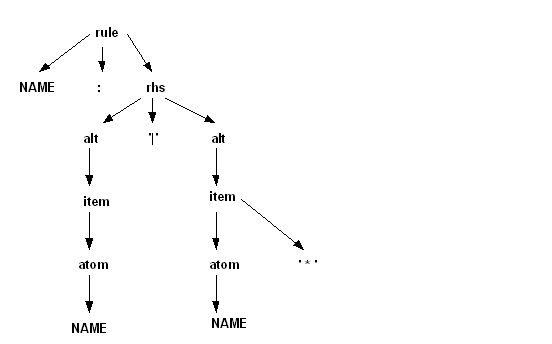| Term |
Meaning |
|---|---|
| A B |
Sequence: match expr using first A and
then B |
| A | B |
Alternative: match expr using either A or B |
| [A] |
Optional:
term can be used or omitted in a match of expr |
| A* |
Optional
repitition: any sequence of terms A can be used to match expr but also
none |
| A+ |
Mandatory
repitition: any sequence of terms A can be used to match expr but at
least one is required. |
| (A) |
Grouping:
used to separate one term from another one |
| ' ...' |
Single
quote: terminal literal |
| " ... " |
Double quote: terminal literal |
